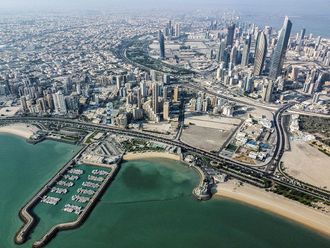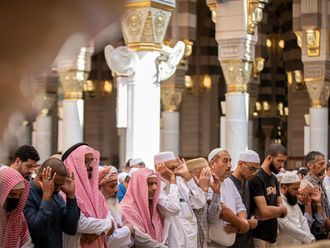
Kinshasa: The morning light showed a scene of desolation as people in Ngaliema surveyed the wreckage of shanty homes swept away by killer floods and landslips.
Among the 44 people who perished overnight on Wednesday in Kinshasa, the capital of Democratic Republic of Congo, were a teenager, Brunelle, her sister, Gladys, and Gladys’ baby.
Their home of makeshift yellowish clay bricks, located at the foot of a steep slope literally dissolved after the waters struck, neighbours said.
“The emergency services came, but they arrived late, around 4am,” said a young man, Magloire, who said that he was the one who found the bodies.
The disaster was one that could have been avoided — the rainfall was indeed torrential but not exceptional, given this city’s location in the heart of central tropical Africa.
But mass fatalities were sadly predictable, given the triple contribution of poverty, uncontrolled development and over-population. Homes made of flimsy materials had been built illegally and without foundations in a place vulnerable to floods.
“This is uncontrolled building,” said Ruffin Abedi, deputy chief of Ngaliema district.
“The regulations have stipulated for years that people shouldn’t live there. But people settle there anyway, because they don’t have the money to go elsewhere.”
A Chinese company had been contracted to install drainage on a road at the top of the slope, but the pipes were swept away by the rain, and lay among debris at the bottom, near a sofa — the only visible sign of a home that once stood there.
“The solution is to move people who live in flood-prone areas to places which are habitable,” said Roger-Nestor Lubiku, former director-general of the Congo Geographic Institute (IGC).
Such things are easier said than done, in a city whose population size is little more than a good guess, and which lacks an accurate Land Registry.
A common estimate is that the DRC capital has 10 million inhabitants, amounting to a rough doubling over less than 20 years, and accounting for possibly a seventh of the national population.
Between 2000 and 2005 alone, the population rose from six million to 7.5 million, according to satellite pictures.
A 2009 study in the Belgian Review of Cartography — Belgium, the former colonial power, retains close ties with the DRC — found that 30 per cent of urban development had taken place on steep slopes with an incline of 15 per cent, or more than one in seven. “These present a significant risk of erosion,” it warned presciently.
Three-quarters of homes in Kinshasa are slums which have no access to sanitation or electricity, Corneille Kanene, former head of UN-Habitat, said last year. The opposition blames the problem on poor governance and the flaws of the state.
The proximity of these slums to wealthy areas is also a shock, and a reminder of DRC’s deep inequalities. Ngaliema’s ramshackle homes lie just a few hundred metres from the villas of Macampagne and a couple of kilometres from the tower blocks, embassies and mansions of Gombe.












